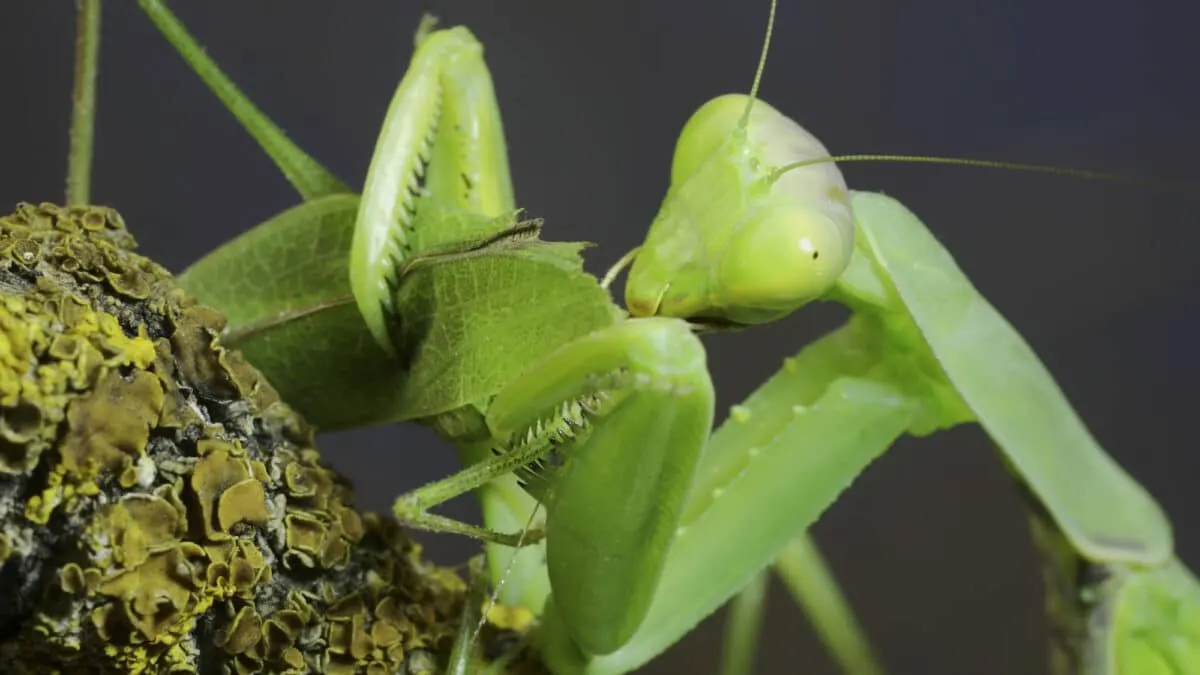How much do you know about the mating rituals of the praying mantis?
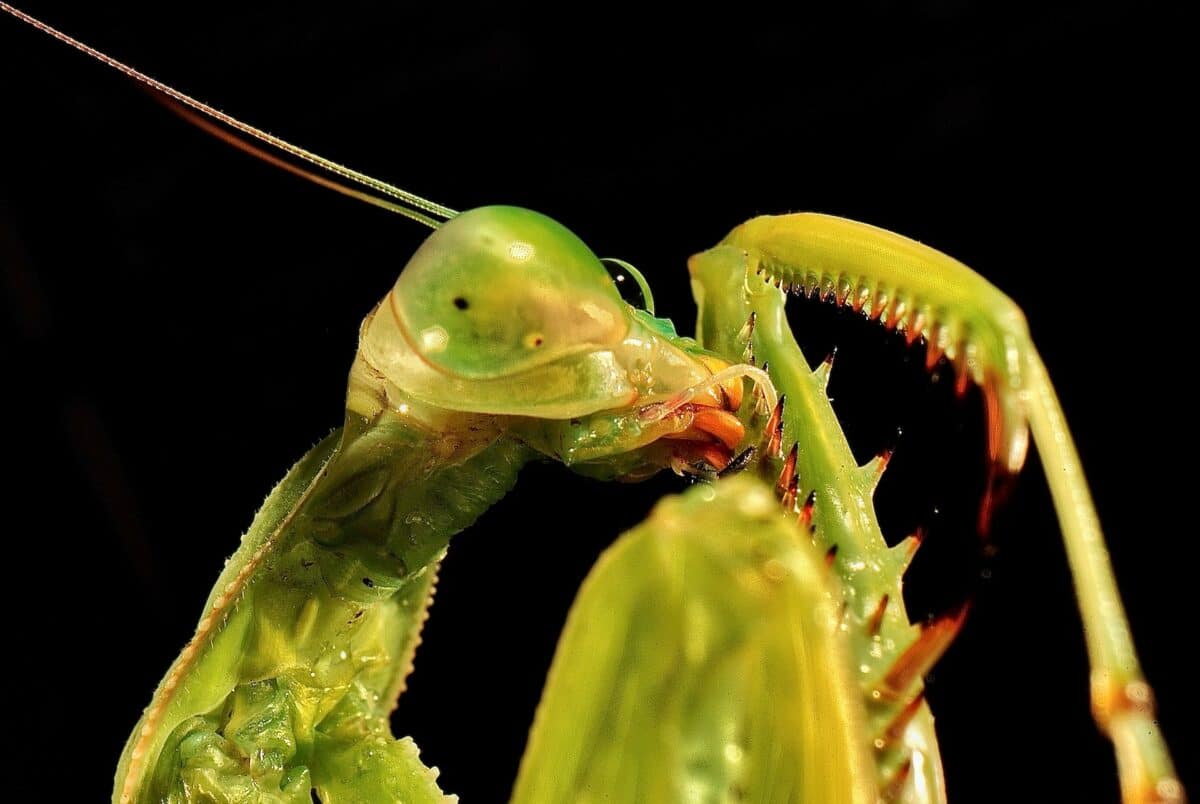
Surprisingly fascinating and peculiarly unique, the mating rituals of the Praying Mantis are some of nature’s most bizarre displays. But how exactly do these mysterious insects carry out their courtship activities?
In this article, we’ll explore the strange yet oddly captivating rituals of mating mantises and discuss why they have developed such peculiar behaviors. So pull up a seat and get ready to peek into one of the weirdest corners of the animal kingdom!
Key Points
- The praying mantis has an elongated body, triangular head, and an iconic praying posture that makes it instantly recognizable.
- Praying mantises thrive in rainforests, meadows, and gardens, adapting to diverse environments.
- They are exceptional predators with sharp forelegs, lightning-fast strikes, and patient ambush hunting, making praying mantises skilled predators.
- Males perform complex displays, including wing extension, flicking, swaying, and pheromone release, in order to attract females.
- Some female praying mantis exhibit sexual cannibalism, offering benefits such as nutrition, fertility, lifespan, and mate selection.
Introduction To the Praying Mantis
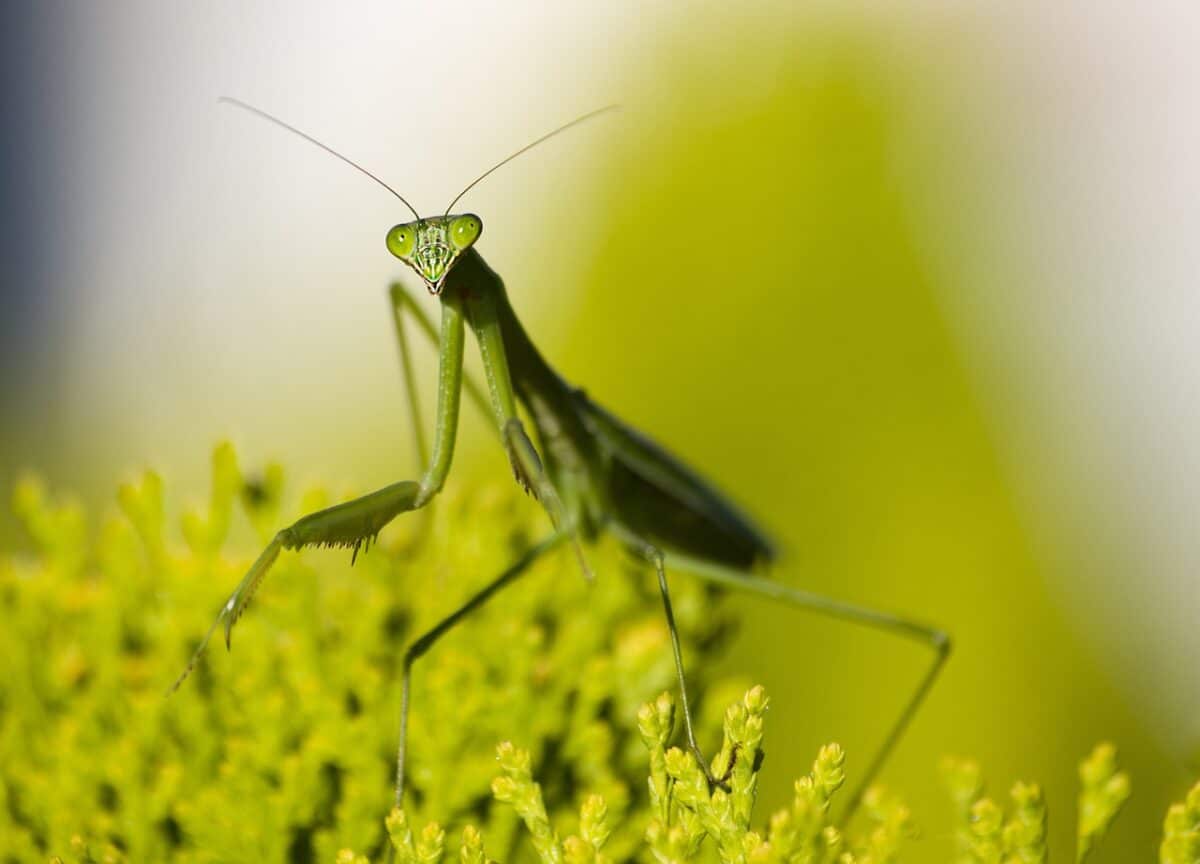
Gracefully, the praying mantis stands tall and proud with its elongated body and triangular head. Known for its unique physical attributes, the praying mantis captures the attention of nature enthusiasts worldwide. Its name is derived from its posture, which looks like it’s praying for its next meal.
Found in many habitats, including rainforests, meadows, and gardens, the praying mantis is an awe-inspiring creature. With its incredible predatory skills, the praying mantis remains a fascinating insect that captivates scientists and avid nature lovers.
Have you ever wondered what the world’s heaviest insect is?
The Mating Rituals of the Praying Mantis
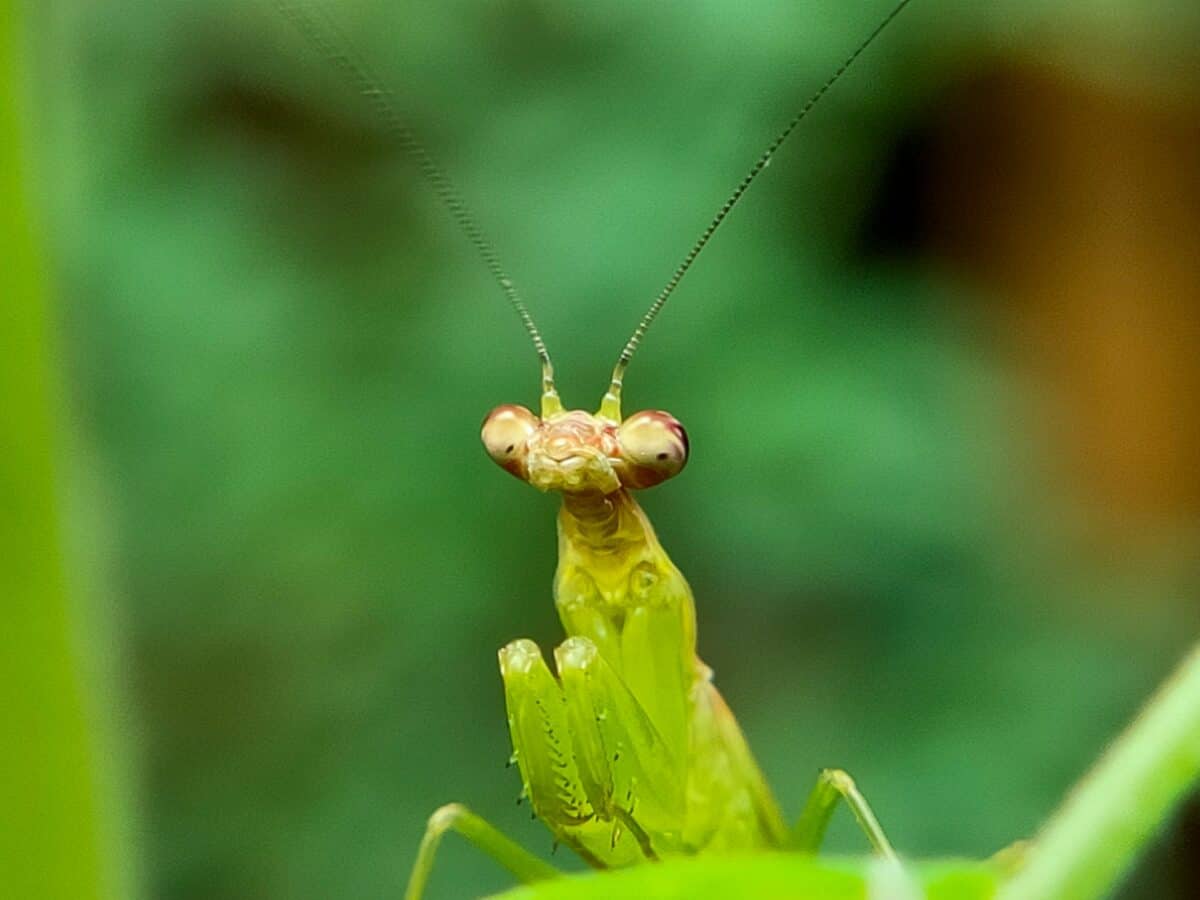
Across the animal kingdom, finding a mate can be intricate and fascinating. From the colorful courtship displays of birds to the chemical signals of insects, mating rituals have adapted and evolved to ensure the survival of each species.
With some species relying on physical attributes and others using complex communication methods, there is no one-size-fits-all approach to finding a mate. Whether it’s the intricately choreographed dance of cranes or the explosive battles of male elephant seals, each mating ritual showcases the unique beauty and complexity of the animal kingdom.
In the case of the praying mantis, the female holds all the power. Once she’s found a mate, she’ll lure him into a false sense of security before swiftly decapitating him mid-coitus. But don’t let that gruesome fact distract you from the intricacy and beauty of the mating ritual itself.
Male praying mantises engage in an elaborate dance to impress the females, showcasing their strength and agility. It’s a reminder that even in the insect world, a complex system of courtship and power dynamics is at play. So, the next time you spot a praying mantis, take a moment to appreciate the drama unfolding before your eyes.
Courtship Displays of the Male Praying Mantis
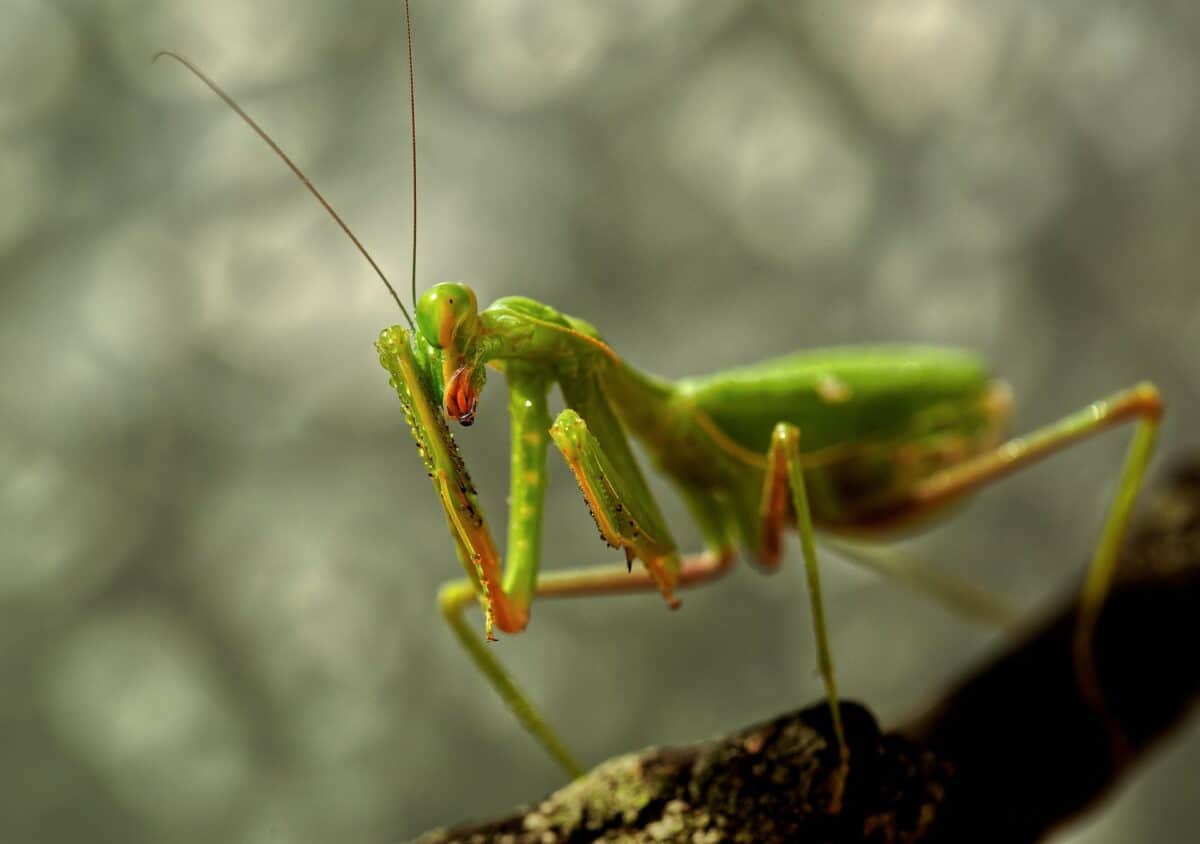
When trying to attract a female mate, the male employs a range of intricate behaviors and physical movements. Here’s a description of their different courtship behaviors:
One of the most striking aspects of this courtship is the male’s willingness to offer himself as a meal for the female before, during, or even after the act of mating. These behaviors may seem strange or brutal, but in the world of the praying mantis, they are a fascinating example of the complexity and diversity of nature.
#1 Wing Extension
The male begins by extending his wings fully, showcasing their vibrant colors and patterns. This display serves to capture the female’s attention and highlight his fitness and attractiveness as a potential mate.
#2 Wing Flicking
After extending his wings, the male rapidly flicks them, creating a distinctive visual effect. This action is thought to enhance the contrast and movement of his wings, further captivating the female’s attention.
#3 Swaying Movements
The male may perform swaying movements, gently rocking his body back and forth or from side to side. This rhythmic motion adds to the overall visual spectacle and helps to mesmerize the female.
#4 Pheromone Release
Alongside the visual display, the male also releases pheromones — chemical signals that can influence the female’s receptiveness to mating. These pheromones are typically emitted from glands on the male’s abdomen and help to communicate his readiness and suitability as a mate.
Overall, the courtship display of the male praying mantis is a combination of visual, olfactory (pheromones), and tactile signals. Through these elaborate displays, the male aims to attract and entice the female, showcasing his fitness and suitability as a mate.
Female Empowerment: The Role of Sexual Cannibalism
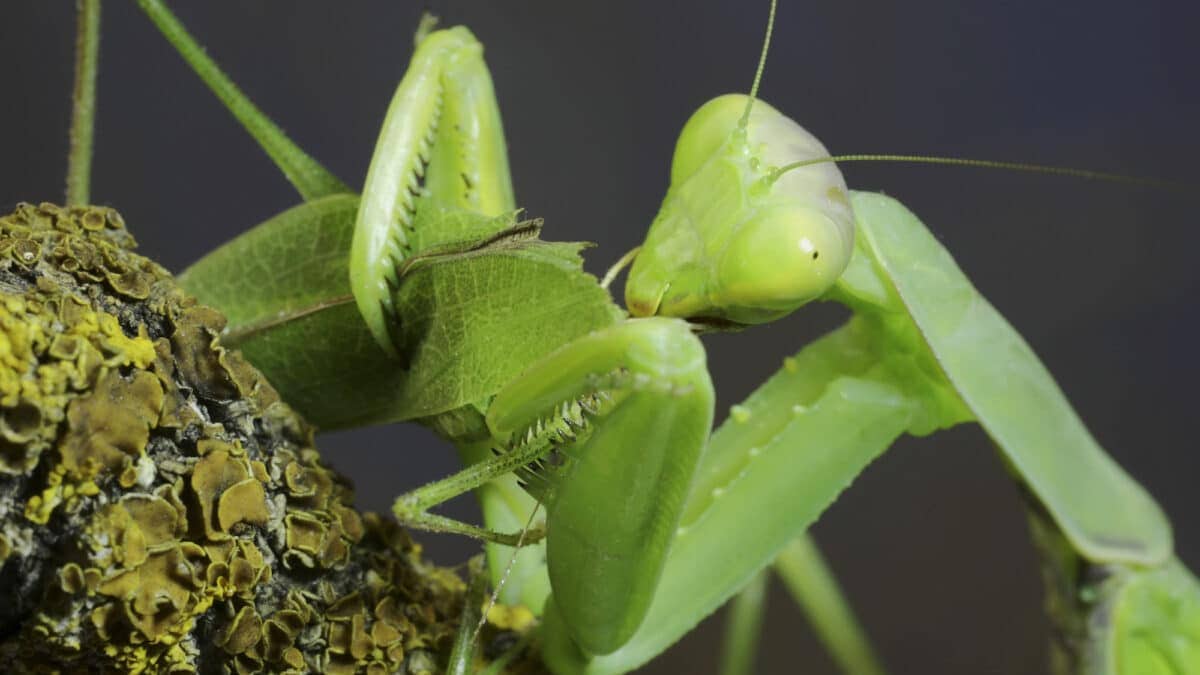
It’s interesting to consider how even something seemingly grotesque as sexual cannibalism can play a role in challenging gender norms. In species like the black widow spider or the praying mantis, females often consume their male counterparts after mating. While this may seem like a submissive act, it gives the female power over when and how the mating will occur.
In this sense, sexual cannibalism subverts traditional roles of male dominance and puts the female in control. Of course, we can’t take this analogy too far for humans (hopefully) since we won’t start eating our partners any time soon! But it’s fascinating to explore how even the darkest aspects of nature can offer insights into gender dynamics.
Another feisty insect is the Fire Ant – learn more about it here.
How the Female Benefits From the Cannibalism
#1 Nutrition
Male praying mantises are often smaller and less nourished compared to females. By consuming the male, the female gains a valuable source of nutrients, which can be crucial for her survival and the development of her eggs.
#2 Enhanced Fertility
The consumption of the male may provide the female with essential proteins and nutrients that improve her fertility. These nutrients can contribute to healthier egg production and increase the chances of successful offspring.
#3 Extended Lifespan
In some cases, the act of consuming the male after mating may help extend the female’s lifespan. The additional nutrients acquired through cannibalism can aid in sustaining her energy levels, allowing her to focus on egg-laying and maternal care for a more extended period.
#4 Mate Choice
By consuming the male, the female exercises mate choice. This behavior ensures that only the strongest and fittest males have the opportunity to reproduce. It acts as a selection mechanism, promoting the passing of superior genetic traits to the next generation.
Evolutionary Significance of Praying Mantis Mating Rituals
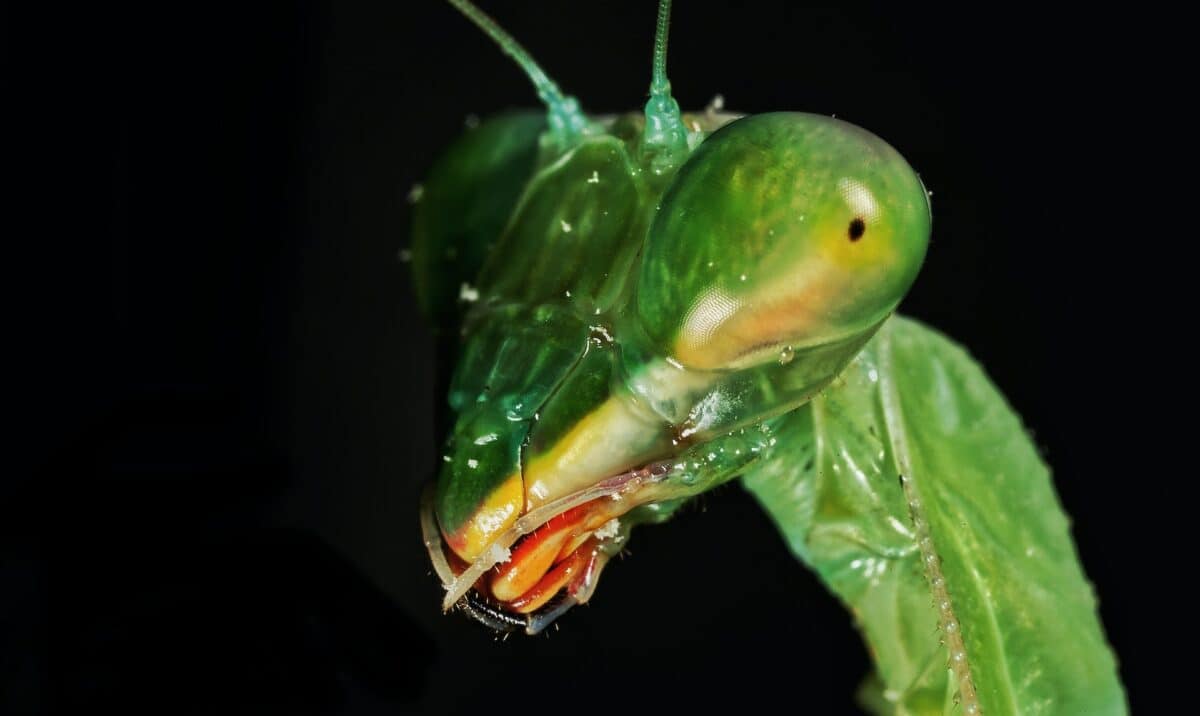
Through centuries of evolution and adaptation, the Praying Mantis has mastered the art of courtship. Their intricate mating rituals involve strategies such as female choice, elaborate movements, and cannibalism. But why have these rituals become so crucial in the evolutionary process? The answer lies in the concept of sexual selection.
The Praying Mantis can better ensure their genes’ survival by displaying these behaviors. In the case of female choice, they can assess the fitness of a potential mate based on the intensity and detail of the male’s courtship display. This, in turn, leads to more robust and viable offspring. Perhaps it is the Praying Mantis that we could all take a lesson from when pursuing love!
Pre-Mating Rituals: From Courting To Courtship Feeding
Before procreation, some creatures engage in a series of mating rituals to ensure the success of their offspring. From courting to courtship feeding, these behaviors range from simple displays of physical prowess to complex acts of nurturing. For example, male peacocks perform elaborate shows of their vibrant feathers, while male pufferfish create intricate sand patterns to attract mates.
Additionally, some species participate in courtship feeding, in which the male presents the female with food as a sign of his ability to provide for her and their young. These fascinating rituals demonstrate the lengths that animals will go to find a suitable partner and ensure the future of their species.
Mating Behavior: The Act of Copulation
In nature, most species rely on copulation as the primary reproduction method. Mating involves a complex combination of physical behaviors that often depend on the species. To many creatures, copulation is an instinctual behavior and a means of survival.
In some cases, fleeting moments of passion can lead to an eternal bond, as is often seen in monogamous animals. For others, mating is merely a transactional activity, as females seek out the most robust and genetically secure mate to provide the best chance of producing healthy offspring. Regardless of the motives behind the behavior, the act of copulation is an integral part of life on this planet.
FAQs
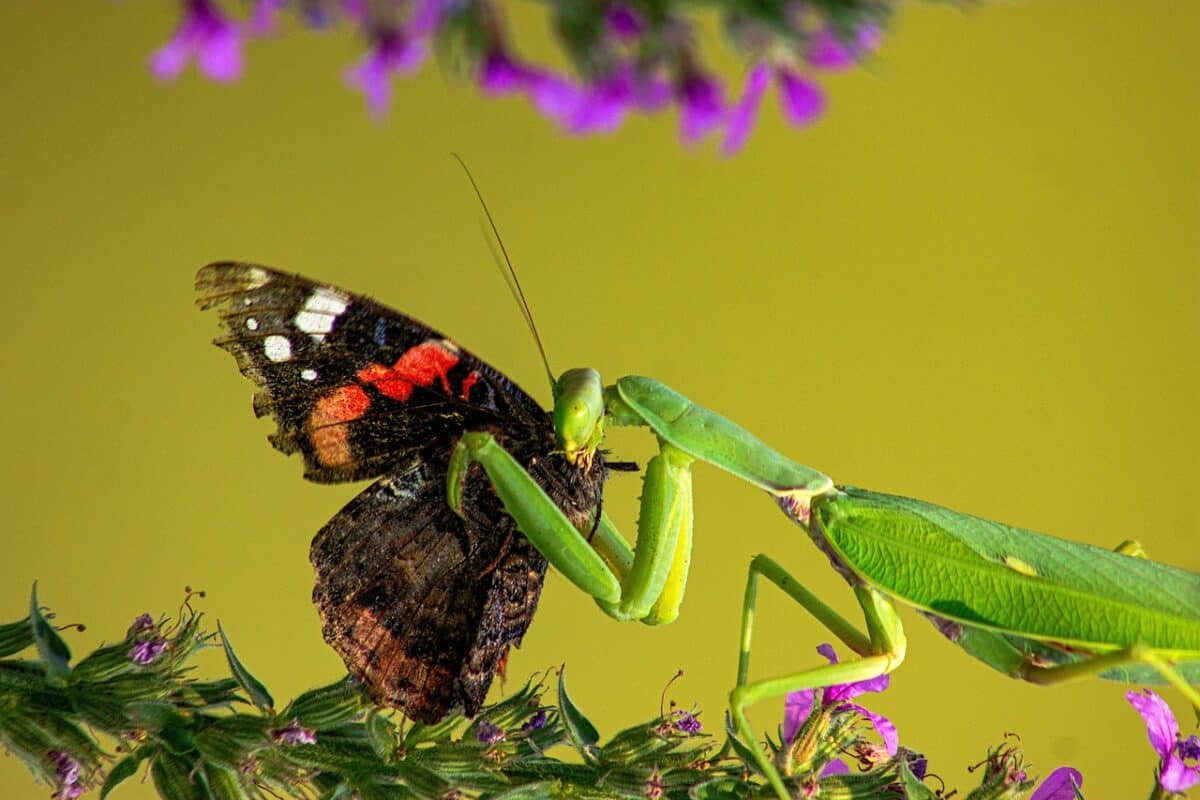
Yes, male praying mantises engage in intricate courtship displays, including movements and behaviors that can be considered as mating dances, to attract females.
The name “praying mantis” is derived from the insect’s distinct posture, where it holds its elongated forelegs together in a manner that resembles a person praying.
While it is possible for a male praying mantis to survive mating, there is a risk of being cannibalized by the female. In some cases, the male may disengage quickly to avoid becoming a meal.
The duration of mating in praying mantises can vary, typically ranging from a few hours to several hours. The exact length depends on factors such as species, environmental conditions, and the specific behavior of the individuals involved.
Mating Rituals of Praying Mantis: Wrapping Up
We are left with awe and fascination as we conclude our observations of the praying mantis. Their complex and bizarre mating rituals testify to nature’s diversity and the biological world’s intricacy. With their swift movements and delicate displays, these creatures enhance our understanding of the evolution of life on our planet.
While it may appear strange and alien to us, the dance of the praying mantis is an essential part of their survival and existence. We can learn much from these remarkable insects, and their unique behavior continues to captivate scientific minds and curious observers alike.
Thank you for reading this article about the mating rituals of the praying mantis! The insect world is full of strange behaviors:
- Unveil the Fastest Wingbeat Frequency in the Insect Kingdom
- The World’s Tiniest Predators: Mites
- Uncover the World’s Heaviest Insect
Join our Forum for free today!


